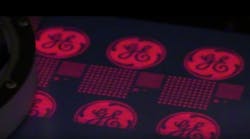Called DAZL!(tm) or Digital Advanced Zone Lighting, the technology provides a system-level solution that will help speed up the design of advanced LED-based backlighting for large screen LCD televisions.
Microsemi says that the patented features of DAZL chipsets produce "unprecedented uniformity of color, brightness, contrast, blur-free performance and energy savings."
Demonstrations comparing fluorescent and advanced LED-lit TVs will take place at Microsemi Booth #25860 in South Hall 2.
Developed in a high-voltage mixed-signal design, the new Microsemi chipsets substantially reduce the number of components needed to build LED backlights, saving significant board space and cutting total system cost by as much as 30 percent. A single DAZL device can support up to 15 LEDs per cluster -- more than double prior solutions, according to the company.
Unique is the ability of DAZL drivers to handle both high power and low power LED backlights, an advantage that can greatly reduce system design efforts and speed new displays into production.
The chipsets provide power management of multiple LED strings via an SP1 interface and external controllers. The result is an advanced light and power management solution for next-generation large panel multi-zone high definition TV displays. Production volumes of the new chipsets are expected to begin in early 2008.
Microsemi Corporation, with corporate headquarters in Irvine, California, is a leading designer and manufacturer of analog and mixed-signal integrated circuits and high reliability semiconductors. The company's semiconductors manage and control or regulate power, protect against transient voltage spikes and transmit, receive and amplify signals.




